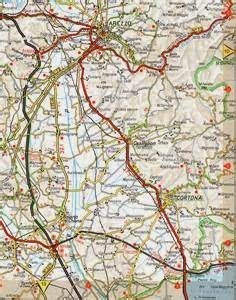Edie Melson's Blog, page 421
February 13, 2014
Business Basics for Today’s Writer—Tips to Help You Stay on Track with an Article
by Edie Melson
 I have the opportunity to meet with lots of new writers. I spend a lot of time teaching writers how to earn an income, especially with article writing. I enjoy critiquing their work and helping them get better. I especially love talking to those just starting out—they are so enthusiastic—so ready to change the world. Listening to them helps me stay fresh and motivated.
I have the opportunity to meet with lots of new writers. I spend a lot of time teaching writers how to earn an income, especially with article writing. I enjoy critiquing their work and helping them get better. I especially love talking to those just starting out—they are so enthusiastic—so ready to change the world. Listening to them helps me stay fresh and motivated.
But with that enthusiasm often comes a lack of focus. This lack of focus is something I see over and over again. For some reason, newer writers tend to want to cover everything, in every piece they write. So today I’m going to give you some hints to help you stay on track with an article.
The ability to keep focused on your subject matter is vital in this day and time. Today’s readers have shorter attention spans than ever before and very few will tolerate rabbit trails to nowhere. It's critical to keep your reader engaged when you’re writing an article.
 Tips to Keep Your Article on Track
Tips to Keep Your Article on Track
Pinpoint Focus—make your subject matter as specific as possible. Don’t just write about babysitting, that’s way too broad a subject. Pick a slant, like babysitting certification for teenagers.Theme Sentence—I always have a single sentence that sums up the point of my article. This isn’t necessarily something I include, word-for-word in my article. But I write that it on a sticky note and keep it visible while I do my research and write my article. It helps me cull out information I don’t need and keep me focused. I’ve learned that if I can’t sum it in one sentence, I know I haven't narrowed my topic sufficiently. Self-editing—I always take time to go back though my article and check to see that every single sentence relates to my focus. It may be a beautifully crafted sentence, but if it doesn’t relate it’s useless to me, and especially to my reader.Delete File—I hate to delete things I love, even when they may not be needed in an article. To get around that, I always open a delete file for every article. Instead of hitting the delete button, I cut the unneeded sections and paste them into the delete file. Doing this has helped me become more ruthless with my self-editing. But this file isn’t just to make me feel better. I use this file to write additional articles.
Self-editing—I always take time to go back though my article and check to see that every single sentence relates to my focus. It may be a beautifully crafted sentence, but if it doesn’t relate it’s useless to me, and especially to my reader.Delete File—I hate to delete things I love, even when they may not be needed in an article. To get around that, I always open a delete file for every article. Instead of hitting the delete button, I cut the unneeded sections and paste them into the delete file. Doing this has helped me become more ruthless with my self-editing. But this file isn’t just to make me feel better. I use this file to write additional articles.
What tips do you have to stay on track with an article? Be sure to leave them in the comments section below.
Don’t forget to join the conversation!Blessings,
Edie
TWEETABLESBusiness basics for today's writer - Tips to help you stay on track with an article - via @EdieMelson (Click to Tweet)
Article writing tips - learn to stay on track and not lose focus - via @EdieMelson (Click to Tweet)
 I have the opportunity to meet with lots of new writers. I spend a lot of time teaching writers how to earn an income, especially with article writing. I enjoy critiquing their work and helping them get better. I especially love talking to those just starting out—they are so enthusiastic—so ready to change the world. Listening to them helps me stay fresh and motivated.
I have the opportunity to meet with lots of new writers. I spend a lot of time teaching writers how to earn an income, especially with article writing. I enjoy critiquing their work and helping them get better. I especially love talking to those just starting out—they are so enthusiastic—so ready to change the world. Listening to them helps me stay fresh and motivated.But with that enthusiasm often comes a lack of focus. This lack of focus is something I see over and over again. For some reason, newer writers tend to want to cover everything, in every piece they write. So today I’m going to give you some hints to help you stay on track with an article.
The ability to keep focused on your subject matter is vital in this day and time. Today’s readers have shorter attention spans than ever before and very few will tolerate rabbit trails to nowhere. It's critical to keep your reader engaged when you’re writing an article.
 Tips to Keep Your Article on Track
Tips to Keep Your Article on TrackPinpoint Focus—make your subject matter as specific as possible. Don’t just write about babysitting, that’s way too broad a subject. Pick a slant, like babysitting certification for teenagers.Theme Sentence—I always have a single sentence that sums up the point of my article. This isn’t necessarily something I include, word-for-word in my article. But I write that it on a sticky note and keep it visible while I do my research and write my article. It helps me cull out information I don’t need and keep me focused. I’ve learned that if I can’t sum it in one sentence, I know I haven't narrowed my topic sufficiently.
 Self-editing—I always take time to go back though my article and check to see that every single sentence relates to my focus. It may be a beautifully crafted sentence, but if it doesn’t relate it’s useless to me, and especially to my reader.Delete File—I hate to delete things I love, even when they may not be needed in an article. To get around that, I always open a delete file for every article. Instead of hitting the delete button, I cut the unneeded sections and paste them into the delete file. Doing this has helped me become more ruthless with my self-editing. But this file isn’t just to make me feel better. I use this file to write additional articles.
Self-editing—I always take time to go back though my article and check to see that every single sentence relates to my focus. It may be a beautifully crafted sentence, but if it doesn’t relate it’s useless to me, and especially to my reader.Delete File—I hate to delete things I love, even when they may not be needed in an article. To get around that, I always open a delete file for every article. Instead of hitting the delete button, I cut the unneeded sections and paste them into the delete file. Doing this has helped me become more ruthless with my self-editing. But this file isn’t just to make me feel better. I use this file to write additional articles.What tips do you have to stay on track with an article? Be sure to leave them in the comments section below.
Don’t forget to join the conversation!Blessings,
Edie
TWEETABLESBusiness basics for today's writer - Tips to help you stay on track with an article - via @EdieMelson (Click to Tweet)
Article writing tips - learn to stay on track and not lose focus - via @EdieMelson (Click to Tweet)
Published on February 13, 2014 01:00
February 11, 2014
Use What You’ve Got—Learning to Write in Bits & Pieces of Time
by Edie Melson
 I had always believed that I needed at least an hour, and preferably three, to make any progress at all with my writing.
I had always believed that I needed at least an hour, and preferably three, to make any progress at all with my writing.
I couldn’t have been more wrong.
In the past year, I’ve learned how to use the time I have, even if it’s just fifteen minutes. Today I want to share with you the things I do to help me increase my productivity when life intrudes.
1. Decide to use what you’ve got. This is the biggest part of the puzzle. If you wait for perfect circumstances, chances are you’ll never finish your book. Truthfully, things rarely line up. When they do—celebrate! When they don’t—just decide to work harder.
2. Do your pre-work.There are a couple of things I recommend you do before you start writing in those short bits of time. AND they can also be done in bits and pieces. Have a road map of where your book is going. I’ve learned that I work better from a scene map (a list of all the scenes I want to include in my book). You may not have something that detailed. But you should know what you want to write about next. After you finish a scene, before you get up, make a couple of notes about where you want to go from there.Have a foundation of research to build on. I take a few weeks, before I start writing, to do my research and compile my notes.
Have a road map of where your book is going. I’ve learned that I work better from a scene map (a list of all the scenes I want to include in my book). You may not have something that detailed. But you should know what you want to write about next. After you finish a scene, before you get up, make a couple of notes about where you want to go from there.Have a foundation of research to build on. I take a few weeks, before I start writing, to do my research and compile my notes.
3. Don’t overthink what you’re writing. Sometimes you’ve got to write junk before you can get to the good stuff. Beyond that, the only thing you can’t fix is an empty page. So put some words on the page and keep moving forward.
4. When you’re writing your first draft, don’t stop to research. When I only have fifteen minutes, I could waste all of it, looking up a fact I need to know. When I come to something I need, I make a note and keep writing. I can look it up after my first draft is done and I begin editing.
5. If you’re working on revisions, make a list . . . actually, make several. Make a list of things you need to look up. Also make a list of scenes you need to add. By making these lists you have a roadmap for your revisions and you don’t have to waste time figuring out what to do next.
 These are all great tips if you’re writing a book, but what if it’s an article or something small that you’re working on? Take the principles I’ve outlined and structure your writing time, no matter what you’re working on.
These are all great tips if you’re writing a book, but what if it’s an article or something small that you’re working on? Take the principles I’ve outlined and structure your writing time, no matter what you’re working on.
Most of all, learning to work in the bits and pieces of time that life sometimes throws us takes practice. When I first started, I spent a lot of time frustrated because what I was writing didn’t measure up. But within just a couple of weeks, my frustration lessoned and productivity increased—exponentially.
Don’t assume you can’t work this way. I did, and I lost years of productivity. Instead, take a chance and learn how to keep moving forward.
Now I’d love to find out what tips do you have to work in less than ideal circumstances.
Don’t forget to join the conversation!Blessings,
Edie
TWEETABLESThink you can't write in 15-minute bits of time? Think again @EdieMelson has tips to make anyone more productive (Click to Tweet)
Use what you've got—learning to write in bits & pieces of time. Tips to be more productive from author @EdieMelson (Click to Tweet)
 I had always believed that I needed at least an hour, and preferably three, to make any progress at all with my writing.
I had always believed that I needed at least an hour, and preferably three, to make any progress at all with my writing. I couldn’t have been more wrong.
In the past year, I’ve learned how to use the time I have, even if it’s just fifteen minutes. Today I want to share with you the things I do to help me increase my productivity when life intrudes.
1. Decide to use what you’ve got. This is the biggest part of the puzzle. If you wait for perfect circumstances, chances are you’ll never finish your book. Truthfully, things rarely line up. When they do—celebrate! When they don’t—just decide to work harder.
2. Do your pre-work.There are a couple of things I recommend you do before you start writing in those short bits of time. AND they can also be done in bits and pieces.
 Have a road map of where your book is going. I’ve learned that I work better from a scene map (a list of all the scenes I want to include in my book). You may not have something that detailed. But you should know what you want to write about next. After you finish a scene, before you get up, make a couple of notes about where you want to go from there.Have a foundation of research to build on. I take a few weeks, before I start writing, to do my research and compile my notes.
Have a road map of where your book is going. I’ve learned that I work better from a scene map (a list of all the scenes I want to include in my book). You may not have something that detailed. But you should know what you want to write about next. After you finish a scene, before you get up, make a couple of notes about where you want to go from there.Have a foundation of research to build on. I take a few weeks, before I start writing, to do my research and compile my notes.3. Don’t overthink what you’re writing. Sometimes you’ve got to write junk before you can get to the good stuff. Beyond that, the only thing you can’t fix is an empty page. So put some words on the page and keep moving forward.
4. When you’re writing your first draft, don’t stop to research. When I only have fifteen minutes, I could waste all of it, looking up a fact I need to know. When I come to something I need, I make a note and keep writing. I can look it up after my first draft is done and I begin editing.
5. If you’re working on revisions, make a list . . . actually, make several. Make a list of things you need to look up. Also make a list of scenes you need to add. By making these lists you have a roadmap for your revisions and you don’t have to waste time figuring out what to do next.
 These are all great tips if you’re writing a book, but what if it’s an article or something small that you’re working on? Take the principles I’ve outlined and structure your writing time, no matter what you’re working on.
These are all great tips if you’re writing a book, but what if it’s an article or something small that you’re working on? Take the principles I’ve outlined and structure your writing time, no matter what you’re working on.Most of all, learning to work in the bits and pieces of time that life sometimes throws us takes practice. When I first started, I spent a lot of time frustrated because what I was writing didn’t measure up. But within just a couple of weeks, my frustration lessoned and productivity increased—exponentially.
Don’t assume you can’t work this way. I did, and I lost years of productivity. Instead, take a chance and learn how to keep moving forward.
Now I’d love to find out what tips do you have to work in less than ideal circumstances.
Don’t forget to join the conversation!Blessings,
Edie
TWEETABLESThink you can't write in 15-minute bits of time? Think again @EdieMelson has tips to make anyone more productive (Click to Tweet)
Use what you've got—learning to write in bits & pieces of time. Tips to be more productive from author @EdieMelson (Click to Tweet)
Published on February 11, 2014 01:00
February 10, 2014
Social Media Monday—Instagram—The Social Media Network that Encourages Writers to Show Don’t Tell!
by Edie Melson
 As writers, one of the things we hear over and over again is
Show Don’t Tell
. Wouldn’t it be great if there was a social media platform that helped us practice that concept? Well there is—it's Instagram. And Show Don't Tell is the best way to describe Instagram.
As writers, one of the things we hear over and over again is
Show Don’t Tell
. Wouldn’t it be great if there was a social media platform that helped us practice that concept? Well there is—it's Instagram. And Show Don't Tell is the best way to describe Instagram.
Today I’m going to share some of the best ways for writers to utilize this image driven network.
But first, let me help you get setup with your Instagram account.
 You can set up your account by downloading the app on your smart phone (iPhone or Android). Or you can go to www.instagram.com.Choose your user name. I recommend you use the name you’re known by, if it’s available. If not, get as close as possible.Compose your bio. You only have 150 characters, so make it count. Make it personal, but not generic. Give people a clue about what they’ll see by following you. I also recommend you include your location.Add your website URL.
You can set up your account by downloading the app on your smart phone (iPhone or Android). Or you can go to www.instagram.com.Choose your user name. I recommend you use the name you’re known by, if it’s available. If not, get as close as possible.Compose your bio. You only have 150 characters, so make it count. Make it personal, but not generic. Give people a clue about what they’ll see by following you. I also recommend you include your location.Add your website URL.
Now that you have an account, how do you use it?
The best way to use it is on your phone. The app is much easier to use and has more bells and whistles. Below are some tips to get you started.
 1. Take pictures of things that having meaning for you. Images are the main star of this platform, so I’d like to challenge you to use your words in a different way. Use them illustrate the photos you share.
1. Take pictures of things that having meaning for you. Images are the main star of this platform, so I’d like to challenge you to use your words in a different way. Use them illustrate the photos you share.
2. The key to connecting on Instagram is like any other social media platform. It’s engagement. The way to engage through this platform is by tugging at the heartstrings. Not sappy photos, but think nostalgia, encouragement, and what your audience cares most about.
3. Use Hashtags. Yes, it's that again. Hashtags are great ways to find and be found on Instagram. This platform uses Hashtags the same way as Twitter. Here's post on Hashtags, in case you need a refresher.
4. Be consistent, but don’t be a pest. It takes time to build a meaningful community, no matter what platform you’re one. Set a reasonable goal for yourself and try to stick with it.
5. Search out others who share images that resonate with you. Then follow their examples. There’s no reason to reinvent the wheel here. There are lots of cool authors who are using Instagram. Spend some time researching what they’re doing right.
 6. Play and have fun. Your audience can tell whether or not you’re having fun.
6. Play and have fun. Your audience can tell whether or not you’re having fun.
Now it’s your turn. Do you have an Instagram account? Here's a link to mine: http://instagram.com/ediegmelson You can find me on your phone by searching for EDIEGMELSON (my user name). Be sure to share yours below. What have you found that works for you? Who are some great folks to follow?
Don’t forget to join the conversation!Blessings,Edie
TWEETABLESStretch yourself as a writer– use your words to illustrate your Instagram images – Tips for Instagram via @EdieMelson (Click to Tweet)
Instagram—The Social Media Network thatEncourages Writers to Show Don’t Tell! Via @EdieMelson(Click to Tweet)
 As writers, one of the things we hear over and over again is
Show Don’t Tell
. Wouldn’t it be great if there was a social media platform that helped us practice that concept? Well there is—it's Instagram. And Show Don't Tell is the best way to describe Instagram.
As writers, one of the things we hear over and over again is
Show Don’t Tell
. Wouldn’t it be great if there was a social media platform that helped us practice that concept? Well there is—it's Instagram. And Show Don't Tell is the best way to describe Instagram.Today I’m going to share some of the best ways for writers to utilize this image driven network.
But first, let me help you get setup with your Instagram account.
 You can set up your account by downloading the app on your smart phone (iPhone or Android). Or you can go to www.instagram.com.Choose your user name. I recommend you use the name you’re known by, if it’s available. If not, get as close as possible.Compose your bio. You only have 150 characters, so make it count. Make it personal, but not generic. Give people a clue about what they’ll see by following you. I also recommend you include your location.Add your website URL.
You can set up your account by downloading the app on your smart phone (iPhone or Android). Or you can go to www.instagram.com.Choose your user name. I recommend you use the name you’re known by, if it’s available. If not, get as close as possible.Compose your bio. You only have 150 characters, so make it count. Make it personal, but not generic. Give people a clue about what they’ll see by following you. I also recommend you include your location.Add your website URL.Now that you have an account, how do you use it?
The best way to use it is on your phone. The app is much easier to use and has more bells and whistles. Below are some tips to get you started.
 1. Take pictures of things that having meaning for you. Images are the main star of this platform, so I’d like to challenge you to use your words in a different way. Use them illustrate the photos you share.
1. Take pictures of things that having meaning for you. Images are the main star of this platform, so I’d like to challenge you to use your words in a different way. Use them illustrate the photos you share.2. The key to connecting on Instagram is like any other social media platform. It’s engagement. The way to engage through this platform is by tugging at the heartstrings. Not sappy photos, but think nostalgia, encouragement, and what your audience cares most about.
3. Use Hashtags. Yes, it's that again. Hashtags are great ways to find and be found on Instagram. This platform uses Hashtags the same way as Twitter. Here's post on Hashtags, in case you need a refresher.
4. Be consistent, but don’t be a pest. It takes time to build a meaningful community, no matter what platform you’re one. Set a reasonable goal for yourself and try to stick with it.
5. Search out others who share images that resonate with you. Then follow their examples. There’s no reason to reinvent the wheel here. There are lots of cool authors who are using Instagram. Spend some time researching what they’re doing right.
 6. Play and have fun. Your audience can tell whether or not you’re having fun.
6. Play and have fun. Your audience can tell whether or not you’re having fun. Now it’s your turn. Do you have an Instagram account? Here's a link to mine: http://instagram.com/ediegmelson You can find me on your phone by searching for EDIEGMELSON (my user name). Be sure to share yours below. What have you found that works for you? Who are some great folks to follow?
Don’t forget to join the conversation!Blessings,Edie
TWEETABLESStretch yourself as a writer– use your words to illustrate your Instagram images – Tips for Instagram via @EdieMelson (Click to Tweet)
Instagram—The Social Media Network thatEncourages Writers to Show Don’t Tell! Via @EdieMelson(Click to Tweet)
Published on February 10, 2014 01:00
February 9, 2014
Weekend Worship—Heaven or Hell
“I have told you these things, so that in me you may have peace. In this world you will have trouble. But take heart! I have overcome the world.” John 16:33
 Today I’d like to pose a question. Where do you live? No, I’m not talking about your address, town, state or even country. The question I’m asking has to do with your spiritual address. Let me be a little more specific.
Today I’d like to pose a question. Where do you live? No, I’m not talking about your address, town, state or even country. The question I’m asking has to do with your spiritual address. Let me be a little more specific.
Are you living in Hell or in Heaven?
Bear with me while I give you some background on why I’m asking such an unusual question. I recently heard a statement that I can’t get out of mind. It’s stayed with me, influencing the way I view things. Tighten your seatbelt, I predict it may shake your world a bit, too.
For a believer, life here on earth is hell—but for someone who doesn’t believe in Jesus, life here on earth is heaven.
 I’ve turned it around and around in my mind, looking for the flaw in such an outrageous statement. I keep going back to the Bible, measuring this thought against the plum-line of God’s word. And I’ve decided it’s an accurate statement.
I’ve turned it around and around in my mind, looking for the flaw in such an outrageous statement. I keep going back to the Bible, measuring this thought against the plum-line of God’s word. And I’ve decided it’s an accurate statement.
Since I’m a believer, I know I’m going to spend eternity in Heaven. Compared to what the Bible promises about Heaven, things on this old earth begin to resemble Hell. Jesus himself promises his followers a life of suffering, persecution, even warfare. Definitely not my definition of Heaven.
But for someone who isn’t a follower of Christ, the Bible promises that this is as good as it gets. At the end of this life waits an actual Hell—complete with fire, brimstone and Satan himself.
This brings me to my next question.
Why are we, as believers, expecting life here to be so good?
So often, we assume our lives will be easy and filled with blessings. I know I do. It doesn’t matter how often I read about the suffering I should expect, I’m still surprised when it appears.
But when I look at life as black or white . . .
Heaven or Hell . . .
 Things get a little bit clearer. I find my perspective restored. It doesn’t take away the suffering, but it does give me an end date. And following that end, comes an eternity so perfect I truly cannot imagine it.
Things get a little bit clearer. I find my perspective restored. It doesn’t take away the suffering, but it does give me an end date. And following that end, comes an eternity so perfect I truly cannot imagine it.
And I think that may be part of the problem. I know I can’t KNOW what Heaven’s going to be like, so I don’t even try. Beyond that, I don’t even spend much time thinking about it. I spend all my time and energy trying to make this life into a kind of Heaven.
I’m not saying we can’t or shouldn’t have joy while we’re here, or encounter blessings along the way. But I need to view them as they’re meant to be viewed—as a foreshadowing of what’s to come.
So today I’m going to make the decision to see this world as it is. But that’s not going to be my focus. Instead, I’m going to fix my eyes on eternity—on Heaven—realizing that all this strife and suffering will pass away.
 Today I’d like to pose a question. Where do you live? No, I’m not talking about your address, town, state or even country. The question I’m asking has to do with your spiritual address. Let me be a little more specific.
Today I’d like to pose a question. Where do you live? No, I’m not talking about your address, town, state or even country. The question I’m asking has to do with your spiritual address. Let me be a little more specific. Are you living in Hell or in Heaven?
Bear with me while I give you some background on why I’m asking such an unusual question. I recently heard a statement that I can’t get out of mind. It’s stayed with me, influencing the way I view things. Tighten your seatbelt, I predict it may shake your world a bit, too.
For a believer, life here on earth is hell—but for someone who doesn’t believe in Jesus, life here on earth is heaven.
 I’ve turned it around and around in my mind, looking for the flaw in such an outrageous statement. I keep going back to the Bible, measuring this thought against the plum-line of God’s word. And I’ve decided it’s an accurate statement.
I’ve turned it around and around in my mind, looking for the flaw in such an outrageous statement. I keep going back to the Bible, measuring this thought against the plum-line of God’s word. And I’ve decided it’s an accurate statement. Since I’m a believer, I know I’m going to spend eternity in Heaven. Compared to what the Bible promises about Heaven, things on this old earth begin to resemble Hell. Jesus himself promises his followers a life of suffering, persecution, even warfare. Definitely not my definition of Heaven.
But for someone who isn’t a follower of Christ, the Bible promises that this is as good as it gets. At the end of this life waits an actual Hell—complete with fire, brimstone and Satan himself.
This brings me to my next question.
Why are we, as believers, expecting life here to be so good?
So often, we assume our lives will be easy and filled with blessings. I know I do. It doesn’t matter how often I read about the suffering I should expect, I’m still surprised when it appears.
But when I look at life as black or white . . .
Heaven or Hell . . .
 Things get a little bit clearer. I find my perspective restored. It doesn’t take away the suffering, but it does give me an end date. And following that end, comes an eternity so perfect I truly cannot imagine it.
Things get a little bit clearer. I find my perspective restored. It doesn’t take away the suffering, but it does give me an end date. And following that end, comes an eternity so perfect I truly cannot imagine it. And I think that may be part of the problem. I know I can’t KNOW what Heaven’s going to be like, so I don’t even try. Beyond that, I don’t even spend much time thinking about it. I spend all my time and energy trying to make this life into a kind of Heaven.
I’m not saying we can’t or shouldn’t have joy while we’re here, or encounter blessings along the way. But I need to view them as they’re meant to be viewed—as a foreshadowing of what’s to come.
So today I’m going to make the decision to see this world as it is. But that’s not going to be my focus. Instead, I’m going to fix my eyes on eternity—on Heaven—realizing that all this strife and suffering will pass away.
Published on February 09, 2014 01:00
February 8, 2014
Social Media Image—Solitude
Yesterday I shared tips to help focus the writer's eye. I think one of the keys to that is building in time for solitude. Solitude renews and restores our creativity.
So my question to you is this. How do you build in the time you need to be alone?
 "Then stirs the feeling infinite, so felt in solitude, where we are least alone."
"Then stirs the feeling infinite, so felt in solitude, where we are least alone."
-Lord Byron
NOTE: I actually took this pic while I was on a retreat with my dear friend and writing partner, Vonda Skelton (www.VondaSkelon.com).
Share your thoughts in the comment section below.
I also invite you to use this image any way you like online. Post it to your blog, share it on Facebook, Twitter, Pinterest, anywhere you'd like. All I ask is that you keep it intact, with my website watermark visible.
Don't forget to join the conversation!Blessings,Edie
So my question to you is this. How do you build in the time you need to be alone?
 "Then stirs the feeling infinite, so felt in solitude, where we are least alone."
"Then stirs the feeling infinite, so felt in solitude, where we are least alone."-Lord Byron
NOTE: I actually took this pic while I was on a retreat with my dear friend and writing partner, Vonda Skelton (www.VondaSkelon.com).
Share your thoughts in the comment section below.
I also invite you to use this image any way you like online. Post it to your blog, share it on Facebook, Twitter, Pinterest, anywhere you'd like. All I ask is that you keep it intact, with my website watermark visible.
Don't forget to join the conversation!Blessings,Edie
Published on February 08, 2014 01:00
February 7, 2014
Capturing the World in Words—7 Tips to Help You Focus Your Writer’s Eye
by Edie Melson
 By and large writers are an observant lot. Things others might brush over or miss entirely stay with us, sparking ideas that blossom and grow. An overheard conversation can lead us to the plot of entire book.
By and large writers are an observant lot. Things others might brush over or miss entirely stay with us, sparking ideas that blossom and grow. An overheard conversation can lead us to the plot of entire book.
But like any skill that comes naturally, there's still room for improvement. I call it focusing the writer’s eye. Today I want to give you seven tips to help you focus your writer's eye.
1. Stop hearing, and take time to listen. The world around us is filled with words. So much so that it becomes a kind of white noise. As writers we need to be able to pick out the bits and pieces that resonate with the souls of our audience.
 2. Search out the music. The spoken word can have a lyrical quality. As writers it’s our job to capture that music on a page. Develop an ear for the cadence in words and sentences.
2. Search out the music. The spoken word can have a lyrical quality. As writers it’s our job to capture that music on a page. Develop an ear for the cadence in words and sentences.
3. Take what’s being said—not what’s meant—and follow it an unexpected end. For example, I overheard someone talk about another person’s downfail. No that’s not a typo, I meant to write DOWNFAIL. From the context, I know he meant to use the word, DOWNFALL. But that lead me to a cool devotion on the difference between the two concepts.
4. Paint a picture . . . with words. Look at something that intrigues you, or inspires you, and recreate it in words. Try to boil it down to the essence in a way that others can experience what you did.
 5. Expand your horizons.I’ve heard it said that the English language is limiting because it’s not a large language. There just aren’t as many words as in other languages. That may be true, but while the average adult is said to have a vocabulary of between 20,000 – 30,000 words, they probably only use about 5000. As writers, we need to strive to be above average. As a matter of fact, it’s my opinion we should set standard.
5. Expand your horizons.I’ve heard it said that the English language is limiting because it’s not a large language. There just aren’t as many words as in other languages. That may be true, but while the average adult is said to have a vocabulary of between 20,000 – 30,000 words, they probably only use about 5000. As writers, we need to strive to be above average. As a matter of fact, it’s my opinion we should set standard.
6. Stretch your creative muscles. Along with number 5 above, don’t just stick with what you know and do well. Stretch yourself by venturing beyond your comfort zone. If your chosen field is fiction, try writing poetry. If you are most comfortable with non-fiction, give writing short stories a try. You may not choose to add that skill to your repertoire, but what you do write will be richer because you branched out.
7. Practice, practice, practice. It doesn’t matter what discipline, every artist will tell you it takes time to become proficient with your medium. This is just as true with words. Get familiar with your medium. Take time to learn the nuances, master the graceful ins and outs of language.
What are some things you do to help you see the world around you in such a way that you can capture it on the page? Share your own tips here. Also, I’d like to issue a challenge. Take one of the above points and practice it every day for a week. Then, next Friday, report back and let’s share what we’ve learned. I’ll do it too.
And don’t forget to join the conversation!Blessings,Edie
TWEETABLESCapturing the world in words—7 Tips to help you focus yourwriter’s eye – via @EdieMelson (Click to Tweet)
Tips to help you focus your writer’s eye, like “Stop hearingand take time to listen” – via @EdieMelson (Click to Tweet)
 By and large writers are an observant lot. Things others might brush over or miss entirely stay with us, sparking ideas that blossom and grow. An overheard conversation can lead us to the plot of entire book.
By and large writers are an observant lot. Things others might brush over or miss entirely stay with us, sparking ideas that blossom and grow. An overheard conversation can lead us to the plot of entire book. But like any skill that comes naturally, there's still room for improvement. I call it focusing the writer’s eye. Today I want to give you seven tips to help you focus your writer's eye.
1. Stop hearing, and take time to listen. The world around us is filled with words. So much so that it becomes a kind of white noise. As writers we need to be able to pick out the bits and pieces that resonate with the souls of our audience.
 2. Search out the music. The spoken word can have a lyrical quality. As writers it’s our job to capture that music on a page. Develop an ear for the cadence in words and sentences.
2. Search out the music. The spoken word can have a lyrical quality. As writers it’s our job to capture that music on a page. Develop an ear for the cadence in words and sentences.3. Take what’s being said—not what’s meant—and follow it an unexpected end. For example, I overheard someone talk about another person’s downfail. No that’s not a typo, I meant to write DOWNFAIL. From the context, I know he meant to use the word, DOWNFALL. But that lead me to a cool devotion on the difference between the two concepts.
4. Paint a picture . . . with words. Look at something that intrigues you, or inspires you, and recreate it in words. Try to boil it down to the essence in a way that others can experience what you did.
 5. Expand your horizons.I’ve heard it said that the English language is limiting because it’s not a large language. There just aren’t as many words as in other languages. That may be true, but while the average adult is said to have a vocabulary of between 20,000 – 30,000 words, they probably only use about 5000. As writers, we need to strive to be above average. As a matter of fact, it’s my opinion we should set standard.
5. Expand your horizons.I’ve heard it said that the English language is limiting because it’s not a large language. There just aren’t as many words as in other languages. That may be true, but while the average adult is said to have a vocabulary of between 20,000 – 30,000 words, they probably only use about 5000. As writers, we need to strive to be above average. As a matter of fact, it’s my opinion we should set standard. 6. Stretch your creative muscles. Along with number 5 above, don’t just stick with what you know and do well. Stretch yourself by venturing beyond your comfort zone. If your chosen field is fiction, try writing poetry. If you are most comfortable with non-fiction, give writing short stories a try. You may not choose to add that skill to your repertoire, but what you do write will be richer because you branched out.
7. Practice, practice, practice. It doesn’t matter what discipline, every artist will tell you it takes time to become proficient with your medium. This is just as true with words. Get familiar with your medium. Take time to learn the nuances, master the graceful ins and outs of language.
What are some things you do to help you see the world around you in such a way that you can capture it on the page? Share your own tips here. Also, I’d like to issue a challenge. Take one of the above points and practice it every day for a week. Then, next Friday, report back and let’s share what we’ve learned. I’ll do it too.
And don’t forget to join the conversation!Blessings,Edie
TWEETABLESCapturing the world in words—7 Tips to help you focus yourwriter’s eye – via @EdieMelson (Click to Tweet)
Tips to help you focus your writer’s eye, like “Stop hearingand take time to listen” – via @EdieMelson (Click to Tweet)
Published on February 07, 2014 01:00
February 6, 2014
Thursday Review—Comprehensive List of Resources for Writers
by Lynn H. Blackburn
 I’ve had the privilege of guest posting here for 3 ½ years. I’ve written about everything from NaNoWriMo to how to keep your word count up during the holidays. But most of the time, I review books about writing. Short books and long books. Easy reads and deep dives into craft. Books that cover specific topics in depth and books that touch on almost everything a writer might encounter in their career.
I’ve had the privilege of guest posting here for 3 ½ years. I’ve written about everything from NaNoWriMo to how to keep your word count up during the holidays. But most of the time, I review books about writing. Short books and long books. Easy reads and deep dives into craft. Books that cover specific topics in depth and books that touch on almost everything a writer might encounter in their career.
Sometimes we need something to remind of us why we write. Sometimes we need something to help us through a sagging middle or a pesky re-write. Sometimes we just need something that makes us laugh. And sometimes, we know we’ve read a review, but we can’t remember where or when. So to make things a touch easier, I’ve compiled a handy reference. This is by no means a comprehensive list of books on writing, but it is a list of my reviews here at The Write Conversation.
*Bonus tip—Books marked with an asterisk are quick reads or are broken up into short chapters so you can read them even if you think you don’t have time to read.
Craft-Craft-Craft
 Plot and Structure by James Scott BellRevision and Self-Editing by James ScottBell (this review was written by my dear friend Mary Denman)Conflict and Suspense by James ScottBellThe First 50 Pages by Jeff GerkeGetting Into Character by BrandilynCollinsThe Dance of Character and Plot by DiAnnMills*TheEmotion Thesaurus by Angela Ackerman and Becca Puglisi*Writer’sDigest
Plot and Structure by James Scott BellRevision and Self-Editing by James ScottBell (this review was written by my dear friend Mary Denman)Conflict and Suspense by James ScottBellThe First 50 Pages by Jeff GerkeGetting Into Character by BrandilynCollinsThe Dance of Character and Plot by DiAnnMills*TheEmotion Thesaurus by Angela Ackerman and Becca Puglisi*Writer’sDigest
Inspiration, Encouragement, or maybe a swift kick to the seat of the pants
 Rumors of Water by L. L. BarkatUnleash the Writer Within by CecilMurphey*The Art of War for Writers by JamesScott Bell (Edie wrote this review)*Write Every Day by Cathy YardleyOn Writing by Steven King*Acceptable Words edited by Gary D.Schmidt and Elizabeth Stickney Pen on Fire by Barbara DeMarco Barrett*Writing Fiction for All You’re Worth byJames Scott BellThe War of Art by Steven Pressfield
Rumors of Water by L. L. BarkatUnleash the Writer Within by CecilMurphey*The Art of War for Writers by JamesScott Bell (Edie wrote this review)*Write Every Day by Cathy YardleyOn Writing by Steven King*Acceptable Words edited by Gary D.Schmidt and Elizabeth Stickney Pen on Fire by Barbara DeMarco Barrett*Writing Fiction for All You’re Worth byJames Scott BellThe War of Art by Steven Pressfield
Writing RelatedScrivener- Part 1 Scrivener- Part 2Moreabout Scrivener - Part 1Moreabout Scriverner - Part 2How to Find Out Anything by Don MacLeod
I hope you find this list helpful and I’d love to hear about your favorite books on the craft so don’t forget to join the conversation!
TWEETABLELooking for a book or program for writers? @Lynnhblackburn and @EdieMelson have the comprehensive list for you! (Click to Tweet)
 Lynn Huggins Blackburn has been telling herself stories since she was five and finally started writing them down. She blogs about faith, family, and her writing journey on her blog Out of the Boat. Lynn is a member of the Jerry B. Jenkins Christian Writers Guild and the Word Weavers, Greenville. She lives in South Carolina where she hangs out with three lively children, one fabulous man, and a cast of imaginary characters who find their way onto the pages of her still unpublished novels. She drinks a lot of coffee.
Lynn Huggins Blackburn has been telling herself stories since she was five and finally started writing them down. She blogs about faith, family, and her writing journey on her blog Out of the Boat. Lynn is a member of the Jerry B. Jenkins Christian Writers Guild and the Word Weavers, Greenville. She lives in South Carolina where she hangs out with three lively children, one fabulous man, and a cast of imaginary characters who find their way onto the pages of her still unpublished novels. She drinks a lot of coffee.
 I’ve had the privilege of guest posting here for 3 ½ years. I’ve written about everything from NaNoWriMo to how to keep your word count up during the holidays. But most of the time, I review books about writing. Short books and long books. Easy reads and deep dives into craft. Books that cover specific topics in depth and books that touch on almost everything a writer might encounter in their career.
I’ve had the privilege of guest posting here for 3 ½ years. I’ve written about everything from NaNoWriMo to how to keep your word count up during the holidays. But most of the time, I review books about writing. Short books and long books. Easy reads and deep dives into craft. Books that cover specific topics in depth and books that touch on almost everything a writer might encounter in their career.Sometimes we need something to remind of us why we write. Sometimes we need something to help us through a sagging middle or a pesky re-write. Sometimes we just need something that makes us laugh. And sometimes, we know we’ve read a review, but we can’t remember where or when. So to make things a touch easier, I’ve compiled a handy reference. This is by no means a comprehensive list of books on writing, but it is a list of my reviews here at The Write Conversation.
*Bonus tip—Books marked with an asterisk are quick reads or are broken up into short chapters so you can read them even if you think you don’t have time to read.
Craft-Craft-Craft
 Plot and Structure by James Scott BellRevision and Self-Editing by James ScottBell (this review was written by my dear friend Mary Denman)Conflict and Suspense by James ScottBellThe First 50 Pages by Jeff GerkeGetting Into Character by BrandilynCollinsThe Dance of Character and Plot by DiAnnMills*TheEmotion Thesaurus by Angela Ackerman and Becca Puglisi*Writer’sDigest
Plot and Structure by James Scott BellRevision and Self-Editing by James ScottBell (this review was written by my dear friend Mary Denman)Conflict and Suspense by James ScottBellThe First 50 Pages by Jeff GerkeGetting Into Character by BrandilynCollinsThe Dance of Character and Plot by DiAnnMills*TheEmotion Thesaurus by Angela Ackerman and Becca Puglisi*Writer’sDigest Inspiration, Encouragement, or maybe a swift kick to the seat of the pants
 Rumors of Water by L. L. BarkatUnleash the Writer Within by CecilMurphey*The Art of War for Writers by JamesScott Bell (Edie wrote this review)*Write Every Day by Cathy YardleyOn Writing by Steven King*Acceptable Words edited by Gary D.Schmidt and Elizabeth Stickney Pen on Fire by Barbara DeMarco Barrett*Writing Fiction for All You’re Worth byJames Scott BellThe War of Art by Steven Pressfield
Rumors of Water by L. L. BarkatUnleash the Writer Within by CecilMurphey*The Art of War for Writers by JamesScott Bell (Edie wrote this review)*Write Every Day by Cathy YardleyOn Writing by Steven King*Acceptable Words edited by Gary D.Schmidt and Elizabeth Stickney Pen on Fire by Barbara DeMarco Barrett*Writing Fiction for All You’re Worth byJames Scott BellThe War of Art by Steven PressfieldWriting RelatedScrivener- Part 1 Scrivener- Part 2Moreabout Scrivener - Part 1Moreabout Scriverner - Part 2How to Find Out Anything by Don MacLeod
I hope you find this list helpful and I’d love to hear about your favorite books on the craft so don’t forget to join the conversation!
TWEETABLELooking for a book or program for writers? @Lynnhblackburn and @EdieMelson have the comprehensive list for you! (Click to Tweet)
 Lynn Huggins Blackburn has been telling herself stories since she was five and finally started writing them down. She blogs about faith, family, and her writing journey on her blog Out of the Boat. Lynn is a member of the Jerry B. Jenkins Christian Writers Guild and the Word Weavers, Greenville. She lives in South Carolina where she hangs out with three lively children, one fabulous man, and a cast of imaginary characters who find their way onto the pages of her still unpublished novels. She drinks a lot of coffee.
Lynn Huggins Blackburn has been telling herself stories since she was five and finally started writing them down. She blogs about faith, family, and her writing journey on her blog Out of the Boat. Lynn is a member of the Jerry B. Jenkins Christian Writers Guild and the Word Weavers, Greenville. She lives in South Carolina where she hangs out with three lively children, one fabulous man, and a cast of imaginary characters who find their way onto the pages of her still unpublished novels. She drinks a lot of coffee.
Published on February 06, 2014 01:00
February 5, 2014
Need Freelance Writing Ideas? Think Local—It’s NOT just for Food!
by Edie Melson
 So often writers look for opportunities far from home. But truthfully some of the best paying gigs and clients may be just around the block from where you live. Today I want to challenge you to think local—it's not just for food!
So often writers look for opportunities far from home. But truthfully some of the best paying gigs and clients may be just around the block from where you live. Today I want to challenge you to think local—it's not just for food!
Where to StartCopywriting is the easiest thing to do locally, and it’s a great way to earn money as a freelance writer. It may sound a little intimidating, but it’s great fun.
What is copywriting?The dictionary defines a copywriter as one who “writes copy for advertising.” The field has gone on to include many aspects of business writing, especially those where the company interfaces with the client or consumer.
 At first glance, this may seem like a very small niche for writers. Quite the contrary—it’s a huge opportunity. This area of writing continues to explode, particularly in the arena of the Internet. Let me introduce you to a small business owner and I think you'll see what I mean. We'll call him Joe, and he's a plumber.
At first glance, this may seem like a very small niche for writers. Quite the contrary—it’s a huge opportunity. This area of writing continues to explode, particularly in the arena of the Internet. Let me introduce you to a small business owner and I think you'll see what I mean. We'll call him Joe, and he's a plumber.
He's a smart business owner and named his business, ABC Plumbing. He chose carefully because with that name, he had a good chance of being the first listing in the directory under plumbers. That was ten years ago and that ad in the telephone directory kept him supplied with customers while it made him visible around the community. But as time went by, fewer people looked at the Yellow Pages when they needed a plumber. Instead they looked online.
Well Joe is a with-it sort of guy, and he had a website built. It wasn't fancy, but it did the job, just like the old ad in the directory. Actually the two looked a lot alike. But Joe began to see his traffic and customer base diminish. This was due to the fact that when someone searched on the Internet for a plumber in his area, his website didn't come up first. In fact, it didn't come up until page three of the search.
 He did some research and found that he needed to add some things to his site to come up higher in the search engine. He came face-to-face with the new acronym SEO. Search Engine Optimization became his key to getting the name out about his business. So he started a blog and began tweaking the information on his site. But all this began to eat into the time he spent running a business.
He did some research and found that he needed to add some things to his site to come up higher in the search engine. He came face-to-face with the new acronym SEO. Search Engine Optimization became his key to getting the name out about his business. So he started a blog and began tweaking the information on his site. But all this began to eat into the time he spent running a business.
At this point, the light bulb came on. Joe realized he was a plumber, not a writer. And this is where we come in. We can provide valuable services to businesses small and large. We can do what we do best—write—while allowing them to get on with business.
So how do you find business owners like Joe, who could use your help?
Local Connections By association—look for natural pairing between you and potential clients, from hobbies to business connections.
By association—look for natural pairing between you and potential clients, from hobbies to business connections.
Think about what hobbies or business experience you have? What are your hobbies? Are you a gardener—maybe you already have a relationship with a local nursery. Start there. What about former businesses. Have you worked as a realtor? Then approach brokers to write content helpful to their customers.
By location—this could be your small town, neighborhood business district, state or region. You can attack this several ways, first by targeting a physical section of your town or city. Or second, by choosing industry to concentrate on, such as childcare or the medical professional.
You can also go one step further, literally. Have some fliers printed up and walk a city block in your local business district. Talk to the business owners; let them put a name with a face. In both circumstances, even if the contact doesn’t pan out immediately, you’ll find that business owners often keep paperwork with financial information on it. A flier you gave out six months ago may generate a new client tomorrow.
Other Think Local ideasCopywriting isn’t the only local writing you can do. You can also look for places to publish your articles close to home. Here are some ideas:The free magazines and newspapers you find outside local businesses.Your local newspaper. Look for small town papers and specialty inserts in the large city papers.Newsletters for local associations, from homeowners to garden clubs.
What about you? What success have you had with writing locally?
Don’t forget to join the conversation!Blessings,
Edie
TWEETABLESThink Local when you're looking for freelance writing gigs and clients - @EdieMelson shows you how. (Click to Tweet)
Need Freelance Writing Ideas? Think Local—It's NOT Just for Food! @Ediemelson shares tips to get you started. (Click to Tweet)
 So often writers look for opportunities far from home. But truthfully some of the best paying gigs and clients may be just around the block from where you live. Today I want to challenge you to think local—it's not just for food!
So often writers look for opportunities far from home. But truthfully some of the best paying gigs and clients may be just around the block from where you live. Today I want to challenge you to think local—it's not just for food!Where to StartCopywriting is the easiest thing to do locally, and it’s a great way to earn money as a freelance writer. It may sound a little intimidating, but it’s great fun.
What is copywriting?The dictionary defines a copywriter as one who “writes copy for advertising.” The field has gone on to include many aspects of business writing, especially those where the company interfaces with the client or consumer.
 At first glance, this may seem like a very small niche for writers. Quite the contrary—it’s a huge opportunity. This area of writing continues to explode, particularly in the arena of the Internet. Let me introduce you to a small business owner and I think you'll see what I mean. We'll call him Joe, and he's a plumber.
At first glance, this may seem like a very small niche for writers. Quite the contrary—it’s a huge opportunity. This area of writing continues to explode, particularly in the arena of the Internet. Let me introduce you to a small business owner and I think you'll see what I mean. We'll call him Joe, and he's a plumber.He's a smart business owner and named his business, ABC Plumbing. He chose carefully because with that name, he had a good chance of being the first listing in the directory under plumbers. That was ten years ago and that ad in the telephone directory kept him supplied with customers while it made him visible around the community. But as time went by, fewer people looked at the Yellow Pages when they needed a plumber. Instead they looked online.
Well Joe is a with-it sort of guy, and he had a website built. It wasn't fancy, but it did the job, just like the old ad in the directory. Actually the two looked a lot alike. But Joe began to see his traffic and customer base diminish. This was due to the fact that when someone searched on the Internet for a plumber in his area, his website didn't come up first. In fact, it didn't come up until page three of the search.
 He did some research and found that he needed to add some things to his site to come up higher in the search engine. He came face-to-face with the new acronym SEO. Search Engine Optimization became his key to getting the name out about his business. So he started a blog and began tweaking the information on his site. But all this began to eat into the time he spent running a business.
He did some research and found that he needed to add some things to his site to come up higher in the search engine. He came face-to-face with the new acronym SEO. Search Engine Optimization became his key to getting the name out about his business. So he started a blog and began tweaking the information on his site. But all this began to eat into the time he spent running a business.At this point, the light bulb came on. Joe realized he was a plumber, not a writer. And this is where we come in. We can provide valuable services to businesses small and large. We can do what we do best—write—while allowing them to get on with business.
So how do you find business owners like Joe, who could use your help?
Local Connections
 By association—look for natural pairing between you and potential clients, from hobbies to business connections.
By association—look for natural pairing between you and potential clients, from hobbies to business connections.Think about what hobbies or business experience you have? What are your hobbies? Are you a gardener—maybe you already have a relationship with a local nursery. Start there. What about former businesses. Have you worked as a realtor? Then approach brokers to write content helpful to their customers.
By location—this could be your small town, neighborhood business district, state or region. You can attack this several ways, first by targeting a physical section of your town or city. Or second, by choosing industry to concentrate on, such as childcare or the medical professional.
You can also go one step further, literally. Have some fliers printed up and walk a city block in your local business district. Talk to the business owners; let them put a name with a face. In both circumstances, even if the contact doesn’t pan out immediately, you’ll find that business owners often keep paperwork with financial information on it. A flier you gave out six months ago may generate a new client tomorrow.
Other Think Local ideasCopywriting isn’t the only local writing you can do. You can also look for places to publish your articles close to home. Here are some ideas:The free magazines and newspapers you find outside local businesses.Your local newspaper. Look for small town papers and specialty inserts in the large city papers.Newsletters for local associations, from homeowners to garden clubs.
What about you? What success have you had with writing locally?
Don’t forget to join the conversation!Blessings,
Edie
TWEETABLESThink Local when you're looking for freelance writing gigs and clients - @EdieMelson shows you how. (Click to Tweet)
Need Freelance Writing Ideas? Think Local—It's NOT Just for Food! @Ediemelson shares tips to get you started. (Click to Tweet)
Published on February 05, 2014 01:00
February 4, 2014
Social Media Monday (Tuesday)—Tips to Create and Maintain a Successful Group Blog—Part One
by Edie Melson
 Many authors I talk to are frustrated by trying to grow and maintain a solo blog. My suggestion for a lot of them is to either find an established group blog to join or to start a group blog. Today I’m going to share my tips to create and maintain a successful group blog.
Many authors I talk to are frustrated by trying to grow and maintain a solo blog. My suggestion for a lot of them is to either find an established group blog to join or to start a group blog. Today I’m going to share my tips to create and maintain a successful group blog.
There are several advantages to a group situationShared responsibilities.Reduced time commitment.Flexibility.
There are also some disadvantagesShared responsibilities. Yes, I know it’s in the list above. But sharing isn’t always easy. None of us is perfect and trust me, people will let you down. If you have serious control issues a group situation may not be the best answer for you.Reduced visibility. With a reduced time commitment also comes less time you’re in the public eye. It’s a trade off. The more popular the site though, the less this becomes an issue.
How to start a group blog The first thing you want to do is decide the focus you want for your site. You can’t do anything else until your idea is fairly well defined. Once you know the direction you want to go, you can move forward. Be sure you have a focus. A group blog, that showcases authors who share about anything is not focused and will be almost impossible to grow.
The first thing you want to do is decide the focus you want for your site. You can’t do anything else until your idea is fairly well defined. Once you know the direction you want to go, you can move forward. Be sure you have a focus. A group blog, that showcases authors who share about anything is not focused and will be almost impossible to grow.
One way this could work is to have a group of authors posting about writing. That would be a focus that would work. There are several great blogs with this focus, including http://www.novelrocket.com, http://killzoneauthors.blogspot.com, http://thewritersalleys.blogspot.com, and http://seekerville.blogspot.com.
Also beware of having too many varied topics. I know of one group blog that has thirty different topics. It’s frustrating for readers because they can’t memorize a schedule like that, so they never know what to expect.
 You also need to think through how many people you want to include. Ideally I recommend no more than twelve to fifteen. A blog this large means no one will post more than twice a month—and that’s if you’re uploading new content seven days a week. It’s doable, but only just. An easier size is between four and eight regular posters.
You also need to think through how many people you want to include. Ideally I recommend no more than twelve to fifteen. A blog this large means no one will post more than twice a month—and that’s if you’re uploading new content seven days a week. It’s doable, but only just. An easier size is between four and eight regular posters.
1. Begin looking for others who fit into your vision for your group blog. I recommend you begin your search with people you know and work out from there.
2. Build in a trial period for everyone who comes on board. This gives everyone a graceful way to end the relationship if it doesn’t work out.
3. Decide a schedule that works for you. The schedule has two parts, how often you want new content on the blog and how often everyone will be posting.
4. Set very specific post guidelines—and write them out.This includes post length, how to handle bylines, bios and images. The list can go on and on. It may seem like a nitpicky thing, but you’ll avoid a lot of grief and a lot of editing if you get this spelled out up front. It will also make transitions easier when you bring on someone new.
Next week I’ll continue this series with how to maintain a group blog. For now, be sure to post any questions you have in the comments section below. And as always—
Don’t forget to join the conversation!Blessings,Edie
TWEETABLESTired of solo blogging? Social Media Mentor @EdieMelson has the tips you need to create a successful group blog. (Click to Tweet)
Tips to create a successful group blog from Social Media Mentor @EdieMelson on The Write Conversation. (Click to Tweet)
 Many authors I talk to are frustrated by trying to grow and maintain a solo blog. My suggestion for a lot of them is to either find an established group blog to join or to start a group blog. Today I’m going to share my tips to create and maintain a successful group blog.
Many authors I talk to are frustrated by trying to grow and maintain a solo blog. My suggestion for a lot of them is to either find an established group blog to join or to start a group blog. Today I’m going to share my tips to create and maintain a successful group blog.There are several advantages to a group situationShared responsibilities.Reduced time commitment.Flexibility.
There are also some disadvantagesShared responsibilities. Yes, I know it’s in the list above. But sharing isn’t always easy. None of us is perfect and trust me, people will let you down. If you have serious control issues a group situation may not be the best answer for you.Reduced visibility. With a reduced time commitment also comes less time you’re in the public eye. It’s a trade off. The more popular the site though, the less this becomes an issue.
How to start a group blog
 The first thing you want to do is decide the focus you want for your site. You can’t do anything else until your idea is fairly well defined. Once you know the direction you want to go, you can move forward. Be sure you have a focus. A group blog, that showcases authors who share about anything is not focused and will be almost impossible to grow.
The first thing you want to do is decide the focus you want for your site. You can’t do anything else until your idea is fairly well defined. Once you know the direction you want to go, you can move forward. Be sure you have a focus. A group blog, that showcases authors who share about anything is not focused and will be almost impossible to grow.One way this could work is to have a group of authors posting about writing. That would be a focus that would work. There are several great blogs with this focus, including http://www.novelrocket.com, http://killzoneauthors.blogspot.com, http://thewritersalleys.blogspot.com, and http://seekerville.blogspot.com.
Also beware of having too many varied topics. I know of one group blog that has thirty different topics. It’s frustrating for readers because they can’t memorize a schedule like that, so they never know what to expect.
 You also need to think through how many people you want to include. Ideally I recommend no more than twelve to fifteen. A blog this large means no one will post more than twice a month—and that’s if you’re uploading new content seven days a week. It’s doable, but only just. An easier size is between four and eight regular posters.
You also need to think through how many people you want to include. Ideally I recommend no more than twelve to fifteen. A blog this large means no one will post more than twice a month—and that’s if you’re uploading new content seven days a week. It’s doable, but only just. An easier size is between four and eight regular posters.1. Begin looking for others who fit into your vision for your group blog. I recommend you begin your search with people you know and work out from there.
2. Build in a trial period for everyone who comes on board. This gives everyone a graceful way to end the relationship if it doesn’t work out.
3. Decide a schedule that works for you. The schedule has two parts, how often you want new content on the blog and how often everyone will be posting.
4. Set very specific post guidelines—and write them out.This includes post length, how to handle bylines, bios and images. The list can go on and on. It may seem like a nitpicky thing, but you’ll avoid a lot of grief and a lot of editing if you get this spelled out up front. It will also make transitions easier when you bring on someone new.
Next week I’ll continue this series with how to maintain a group blog. For now, be sure to post any questions you have in the comments section below. And as always—
Don’t forget to join the conversation!Blessings,Edie
TWEETABLESTired of solo blogging? Social Media Mentor @EdieMelson has the tips you need to create a successful group blog. (Click to Tweet)
Tips to create a successful group blog from Social Media Mentor @EdieMelson on The Write Conversation. (Click to Tweet)
Published on February 04, 2014 01:00
February 3, 2014
Calendar Days—Holidays, Special Days & Downright Crazy Days in February
I know, this is supposed to be Social Media Monday. But I'm out of town on short writing retreat and I can't answer questions because I won't have Internet access until Tuesday. So I'm postponing Social Media Monday until Tuesday. Hope you'll forgive me!
 Now onto some really fun holidays in February!
Now onto some really fun holidays in February!
It's that time again—Calendar Days. I sure hope you all are enjoying this column as much as me. It's funny, as I research these each month, I think of so many of you.
And I can't help but giggle at the holidays that fall on or near the same date, like February 4—Thank a mailman day and Facebook's Birthday—hasn't FB pretty much replaced a lot of messages that used to be sent in an envelope with a stamp? Or what about International Sword Swallowers Day and International Tongue Twister Day on February 22.
Using the calendar for blog post or even article ideas is a great way to jumpstart your creativity. It's also a fun writing prompt idea.
Calendar days are also great conversation starters for social media sites like Facebook and Twitter.
February Holidays, Special Days & Downright Crazy Days
February is: Bake for Family Fun Month!Bake for Family Fun MonthNational Black History MonthNational Time Management MonthLibrary Lovers MonthInternational Boost Self-esteem monthGrapefruit MonthNational Haiku Writing MonthBird Feeding MonthPull Your Sofa Off the Wall MonthSweet Potato MonthHot Breakfast MonthCherry MonthAmerican Heart Month
Bake for Family Fun Month!Bake for Family Fun MonthNational Black History MonthNational Time Management MonthLibrary Lovers MonthInternational Boost Self-esteem monthGrapefruit MonthNational Haiku Writing MonthBird Feeding MonthPull Your Sofa Off the Wall MonthSweet Potato MonthHot Breakfast MonthCherry MonthAmerican Heart Month
Weekly CelebrationsWeek 1:Women’s Heart WeekChildren’s Authors and Illustrators WeekJust Say No to PowerPoint WeekInternational Networking WeekInternational Friendship Week
 It's Jell-O Week!Week 2:Congenital Heart Defect Awareness WeekHave a Heart for a Chained Dog WeekRisk Awareness WeekLove Makes the World Go Round; But, Laughter Keeps us From Getting Dizzy WeekJell-O Week
It's Jell-O Week!Week 2:Congenital Heart Defect Awareness WeekHave a Heart for a Chained Dog WeekRisk Awareness WeekLove Makes the World Go Round; But, Laughter Keeps us From Getting Dizzy WeekJell-O Week
Week 3:Brotherhood/Sisterhood WeekBuild a Better Trade Show Image WeekNational Engineers WeekNational Justice for Animals WeekNational Entrepreneurship WeekTexas Cowboy Poetry Week
Week 4:National Secondhand Wardrobe WeekPeace Corps WeekNational Eating Disorders Awareness Week
Daily CelebrationsFebruary 1 February is Ice Cream for Breakfast Day.Car Insurance DayChange Your Password DayG.I. Joe DayInternational Face & Body Art DayFreedom DayRobinson Crusoe DaySpunky Old Broads DayDecorating with Candy DayIce Cream for Breakfast DayTake Your Child to the Library Day
February is Ice Cream for Breakfast Day.Car Insurance DayChange Your Password DayG.I. Joe DayInternational Face & Body Art DayFreedom DayRobinson Crusoe DaySpunky Old Broads DayDecorating with Candy DayIce Cream for Breakfast DayTake Your Child to the Library Day
February 2Groundhog DayPopcorn DayWorld Play Your Ukulele DayAyn Rand DayCandelmasHedgehog Day
 February 4 is Facebook's Birthday.February 3Carrot Cake DayFour Chaplains Memorial DayThe Day the Music Died
February 4 is Facebook's Birthday.February 3Carrot Cake DayFour Chaplains Memorial DayThe Day the Music Died
February 4Homemade Soup DayFacebook’s BirthdayLiberace DayQuacker DayWorld Cancer DayThank a Mailman Day
February 5Nutella DayAdlai Stevenson DayPancake DayDigital Learning DayChocolate Fondue DayWeatherman’s Day
February 6Lame Duck DayCanadian Maple Syrup Day
February 7Send a Card to a Friend DayBubble Gum DayWear Red DayGirl Scout Cookie DayWave All Your Fingers at Your Neighbors DayBallet Day
February 8Laugh and Get Rich DayBoy Scout Anniversary DayOpera DayKite Flying Day
 February 9 is Read in a Bathtub Day.February 9Toothache DayAutism Sunday (Second Sunday in February)Man DayRead in the Bathtub DayStop bullying Day
February 9 is Read in a Bathtub Day.February 9Toothache DayAutism Sunday (Second Sunday in February)Man DayRead in the Bathtub DayStop bullying Day
February 10Umbrella DayClean Out Your Computer DayPlimsoll Day
February 11Don’t Cry Over Spilled Milk DayWhite Shirt Day or White T-shirt DayGet Out Your Guitar DayPro Sports Wives DaySatisfied Staying Single DayExtraterrestrial Culture DayMake a Friend Day
February 12Lincoln’s BirthdayOglethorpe DayPaul Bunyan DayPlum Pudding Day
February 13World Radio DayMadly in Love with me DayGet a Different Name DayEmployee Legal Awareness Day
 February 14 is also Library Lovers Day!February 14Library Lovers DayNational Have a Heart DayFrederick Douglass DayValentines DayDonor DayFerris Wheel Day
February 14 is also Library Lovers Day!February 14Library Lovers DayNational Have a Heart DayFrederick Douglass DayValentines DayDonor DayFerris Wheel Day
February 15Susan B. Anthony DayWorld Whale DayGumdrop DayNational Hippo Day
February 16National Almond DayInnovation Day
February 17Presidents DayOn My Way DayChampion Crab Races DayNational PTA Founders DayRandom Acts of Kindness Day
February 18Pluto DayCow Milked While Flying in an Airplane DaySingle Tasking DayBattery Day
 February 19 is International Tug-of-War day.February 19Iwo Jima DayInternational Tug-of-War DaySingle Tasking DayChocolate Mint Day
February 19 is International Tug-of-War day.February 19Iwo Jima DayInternational Tug-of-War DaySingle Tasking DayChocolate Mint Day
February 20Cherry Pie DayWorld Day for Social JusticeLove Your Pet DayIntroduce a Girl to Engineering Day
February 21Sticky Bun DayInternational Mother Language Day
February 22George Washington’s BirthdayInternational Sword Swallowers DayInternational Tongue Twister DayOpen that Bottle NightBanana Bread DayWalking the Dog DayMargarita DayWorld Thinking Day
 February 23 is Curling is Cool Day!February 23National Dog Biscuit DayCurling is Cool DayDiesel Engine DayMelba Toast Day
February 23 is Curling is Cool Day!February 23National Dog Biscuit DayCurling is Cool DayDiesel Engine DayMelba Toast Day
February 24Tortilla Chip DayNational Cupcake Day (Canada)Museum Advocacy Day
February 25Clam Chowder DaySpay Day USAChocolate-covered Peanuts Day
February 26Inconvenience Yourself DayWorld Pistachio DayFor Pete’s Sake DayNational Personal Chef DayLevi Strauss DayTell a Fairy Tale Day
 February 28 is Read To Me Day!February 27National Chili DayInternational Polar Bear DayStrawberry Day
February 28 is Read To Me Day!February 27National Chili DayInternational Polar Bear DayStrawberry Day
February 28Chocolate Soufflé DayRead To Me DayNational Tooth Fairy DayRare Disease DayFloral Design Day
Now let's do a little brainstorming for next month. What are some of your favorite days from the list and how do you propose using them?
Don't forget to join the conversation!Blessings,
Edie
TWEETABLES
Have you run out of article ideas to write about? @EdieMelson has a list of crazy holidays to inspire you. (Click to Tweet)
Use crazy February holidays to start a conversation on social media - @EdieMelson has the list to inspire you. (Click to Tweet)
 Now onto some really fun holidays in February!
Now onto some really fun holidays in February!It's that time again—Calendar Days. I sure hope you all are enjoying this column as much as me. It's funny, as I research these each month, I think of so many of you.
And I can't help but giggle at the holidays that fall on or near the same date, like February 4—Thank a mailman day and Facebook's Birthday—hasn't FB pretty much replaced a lot of messages that used to be sent in an envelope with a stamp? Or what about International Sword Swallowers Day and International Tongue Twister Day on February 22.
Using the calendar for blog post or even article ideas is a great way to jumpstart your creativity. It's also a fun writing prompt idea.
Calendar days are also great conversation starters for social media sites like Facebook and Twitter.
February Holidays, Special Days & Downright Crazy Days
February is:
 Bake for Family Fun Month!Bake for Family Fun MonthNational Black History MonthNational Time Management MonthLibrary Lovers MonthInternational Boost Self-esteem monthGrapefruit MonthNational Haiku Writing MonthBird Feeding MonthPull Your Sofa Off the Wall MonthSweet Potato MonthHot Breakfast MonthCherry MonthAmerican Heart Month
Bake for Family Fun Month!Bake for Family Fun MonthNational Black History MonthNational Time Management MonthLibrary Lovers MonthInternational Boost Self-esteem monthGrapefruit MonthNational Haiku Writing MonthBird Feeding MonthPull Your Sofa Off the Wall MonthSweet Potato MonthHot Breakfast MonthCherry MonthAmerican Heart MonthWeekly CelebrationsWeek 1:Women’s Heart WeekChildren’s Authors and Illustrators WeekJust Say No to PowerPoint WeekInternational Networking WeekInternational Friendship Week
 It's Jell-O Week!Week 2:Congenital Heart Defect Awareness WeekHave a Heart for a Chained Dog WeekRisk Awareness WeekLove Makes the World Go Round; But, Laughter Keeps us From Getting Dizzy WeekJell-O Week
It's Jell-O Week!Week 2:Congenital Heart Defect Awareness WeekHave a Heart for a Chained Dog WeekRisk Awareness WeekLove Makes the World Go Round; But, Laughter Keeps us From Getting Dizzy WeekJell-O WeekWeek 3:Brotherhood/Sisterhood WeekBuild a Better Trade Show Image WeekNational Engineers WeekNational Justice for Animals WeekNational Entrepreneurship WeekTexas Cowboy Poetry Week
Week 4:National Secondhand Wardrobe WeekPeace Corps WeekNational Eating Disorders Awareness Week
Daily CelebrationsFebruary 1
 February is Ice Cream for Breakfast Day.Car Insurance DayChange Your Password DayG.I. Joe DayInternational Face & Body Art DayFreedom DayRobinson Crusoe DaySpunky Old Broads DayDecorating with Candy DayIce Cream for Breakfast DayTake Your Child to the Library Day
February is Ice Cream for Breakfast Day.Car Insurance DayChange Your Password DayG.I. Joe DayInternational Face & Body Art DayFreedom DayRobinson Crusoe DaySpunky Old Broads DayDecorating with Candy DayIce Cream for Breakfast DayTake Your Child to the Library DayFebruary 2Groundhog DayPopcorn DayWorld Play Your Ukulele DayAyn Rand DayCandelmasHedgehog Day
 February 4 is Facebook's Birthday.February 3Carrot Cake DayFour Chaplains Memorial DayThe Day the Music Died
February 4 is Facebook's Birthday.February 3Carrot Cake DayFour Chaplains Memorial DayThe Day the Music DiedFebruary 4Homemade Soup DayFacebook’s BirthdayLiberace DayQuacker DayWorld Cancer DayThank a Mailman Day
February 5Nutella DayAdlai Stevenson DayPancake DayDigital Learning DayChocolate Fondue DayWeatherman’s Day
February 6Lame Duck DayCanadian Maple Syrup Day
February 7Send a Card to a Friend DayBubble Gum DayWear Red DayGirl Scout Cookie DayWave All Your Fingers at Your Neighbors DayBallet Day
February 8Laugh and Get Rich DayBoy Scout Anniversary DayOpera DayKite Flying Day
 February 9 is Read in a Bathtub Day.February 9Toothache DayAutism Sunday (Second Sunday in February)Man DayRead in the Bathtub DayStop bullying Day
February 9 is Read in a Bathtub Day.February 9Toothache DayAutism Sunday (Second Sunday in February)Man DayRead in the Bathtub DayStop bullying DayFebruary 10Umbrella DayClean Out Your Computer DayPlimsoll Day
February 11Don’t Cry Over Spilled Milk DayWhite Shirt Day or White T-shirt DayGet Out Your Guitar DayPro Sports Wives DaySatisfied Staying Single DayExtraterrestrial Culture DayMake a Friend Day
February 12Lincoln’s BirthdayOglethorpe DayPaul Bunyan DayPlum Pudding Day
February 13World Radio DayMadly in Love with me DayGet a Different Name DayEmployee Legal Awareness Day
 February 14 is also Library Lovers Day!February 14Library Lovers DayNational Have a Heart DayFrederick Douglass DayValentines DayDonor DayFerris Wheel Day
February 14 is also Library Lovers Day!February 14Library Lovers DayNational Have a Heart DayFrederick Douglass DayValentines DayDonor DayFerris Wheel DayFebruary 15Susan B. Anthony DayWorld Whale DayGumdrop DayNational Hippo Day
February 16National Almond DayInnovation Day
February 17Presidents DayOn My Way DayChampion Crab Races DayNational PTA Founders DayRandom Acts of Kindness Day
February 18Pluto DayCow Milked While Flying in an Airplane DaySingle Tasking DayBattery Day
 February 19 is International Tug-of-War day.February 19Iwo Jima DayInternational Tug-of-War DaySingle Tasking DayChocolate Mint Day
February 19 is International Tug-of-War day.February 19Iwo Jima DayInternational Tug-of-War DaySingle Tasking DayChocolate Mint DayFebruary 20Cherry Pie DayWorld Day for Social JusticeLove Your Pet DayIntroduce a Girl to Engineering Day
February 21Sticky Bun DayInternational Mother Language Day
February 22George Washington’s BirthdayInternational Sword Swallowers DayInternational Tongue Twister DayOpen that Bottle NightBanana Bread DayWalking the Dog DayMargarita DayWorld Thinking Day
 February 23 is Curling is Cool Day!February 23National Dog Biscuit DayCurling is Cool DayDiesel Engine DayMelba Toast Day
February 23 is Curling is Cool Day!February 23National Dog Biscuit DayCurling is Cool DayDiesel Engine DayMelba Toast DayFebruary 24Tortilla Chip DayNational Cupcake Day (Canada)Museum Advocacy Day
February 25Clam Chowder DaySpay Day USAChocolate-covered Peanuts Day
February 26Inconvenience Yourself DayWorld Pistachio DayFor Pete’s Sake DayNational Personal Chef DayLevi Strauss DayTell a Fairy Tale Day
 February 28 is Read To Me Day!February 27National Chili DayInternational Polar Bear DayStrawberry Day
February 28 is Read To Me Day!February 27National Chili DayInternational Polar Bear DayStrawberry DayFebruary 28Chocolate Soufflé DayRead To Me DayNational Tooth Fairy DayRare Disease DayFloral Design Day
Now let's do a little brainstorming for next month. What are some of your favorite days from the list and how do you propose using them?
Don't forget to join the conversation!Blessings,
Edie
TWEETABLES
Have you run out of article ideas to write about? @EdieMelson has a list of crazy holidays to inspire you. (Click to Tweet)
Use crazy February holidays to start a conversation on social media - @EdieMelson has the list to inspire you. (Click to Tweet)
Published on February 03, 2014 01:00



